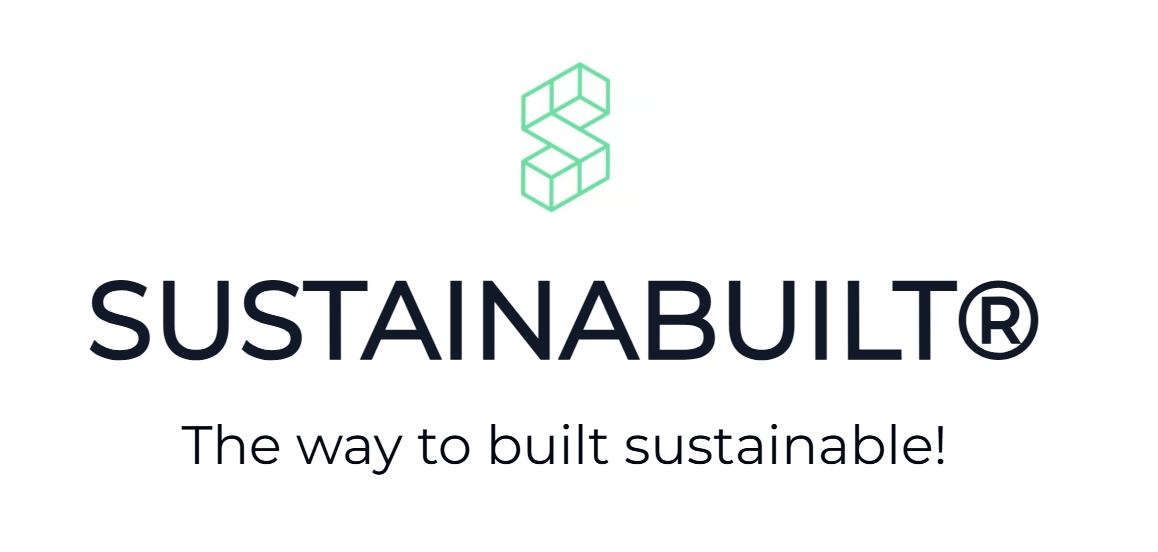- SUSTAINABUILT®
- Posts
- Climate-friendly building with wood?
Climate-friendly building with wood?
German climate protection targets for the building sector missed again in 2023
German climate protection targets for the building sector missed again in 2023
According to the UN, the construction sector is responsible for around 38% of global CO2 emissions. The construction industry must halve its direct greenhouse gas emissions by 2030 in order to meet the Paris climate protection targets and achieve net zero emissions for all buildings by 2050. Construction methods that contribute to achieving the climate targets must be used to a greater extent.
Timber construction causes fewer emissions than solid construction
Comparative life cycle assessments of solid construction and timber construction methods clearly show the savings potential of timber construction. With analogous energy standards, the greatest lever is the production of the building. Compared to reinforced concrete construction, timber frame construction releases almost half as many greenhouse gases:
More and more project developers are also discovering timber as a building material. A fast construction time/shorter capital commitment periods, a lower defect rate and a better ecological balance are attracting the interest of real estate project developers. The construction of buildings can thus protect the climate, store CO2 in the long term and even have a positive effect on returns.
Wood is a natural CO2 sink
In contrast to concrete, steel or sand-lime brick, which are very energy and emission-intensive to produce, wood binds CO2 in the form of carbon during growth. For every kilogram of wood, 1.83 kg of carbon dioxide is removed from the atmosphere. When wood is used in durable products such as buildings, the greenhouse gas is stored for a long time. Wood as a building material also causes significantly fewer emissions during production and disposal. If it is used to replace more energy-intensive building materials, CO2 emissions are avoided.
Timber extraction changes the sink capacity of the forest
However, the forest is also a CO2 reservoir and interventions such as timber extraction have an impact on its CO2 sink capacity. This capacity decreases with intensive timber extraction. If timber extraction is reduced, more biomass remains in the forest that can absorb CO2. The carbon storage capacity of the forest increases. The interplay of these effects is referred to as the CO2 storage balance.
In order to demonstrate the substitution potential of timber construction methods compared to solid construction methods, Christian Freericks has demonstrated this for a 30m2 module in timber construction:

Tabelle Treibhausgas-Vermeidung
Climate and resource-friendly construction
In order to exploit the full potential of timber construction, the environmental impact must be reduced as far as possible:
The preservation or conversion of existing buildings and energy-efficient refurbishment is always preferable to new construction. The authorities should advocate rapid conversion procedures in order to actively counteract climate change
If new buildings are built, then with a combination of measures consisting of renewable energy generation, an energy-efficient building envelope, space efficiency and a resource-conserving construction method, e.g. in wood or with Co2 - neutral building materials.
Efficient use of wood as a raw material from sustainably managed forests and the shortest possible transportation routes. Precise proof of the origin of the wood.
If possible, wood should be used in a cycle, at least at as many stages of use as possible. Avoidance of thermal utilization
Increase the proportion of timber construction for new builds. Currently increasing in the single-family home segment, low in multi-storey residential construction.

Q. TUM Holzbauforschung, Bauen mit Holz = aktiver Klimaschutz S.11
#Timber construction #Modular construction #CO2 #Climate change
Sources:
Achenbach, H., Rüter, S. (2016): Ökobilanz-Daten für die Erstellung von Fertighäusern in Holzbauweise. Braunschweig: Johann Heinrich von Thünen-Institut, 128p, Thünen Rep 38.
*Mahler, B., Idler, S., Nusser, T., & Gantner, J. (2019): Energieaufwand für Gebäudekonzepte im gesamten Lebenszyklus. Im Auftrag des Umweltbundesamtes, 2019.
Wolf, T. , Untergutsch, A., Wensing, C., Mittelbach, H., Pagenkopf, F. L., Kellenberger, D. & Kubowitz, P. (2020): Potentiale von Bauen in Holz - Erweiterung der Datengrundlage zur Verfügbarkeit von Holz als Baustoff zum Einsatz im Holzbau sowie vergleichende Ökobilanzierung von Häusern in Massiv- und Holzbauweise. Im Auftrag des Umweltbundesamtes, 2020.
Fehrenbach, H., Bischoff, M., Böttcher, H., Reise, J. und Hennenberg, K. J. (2022): The Missing Limb: Including Impacts of Biomass Extraction on Forest Carbon Stocks in Greenhouse Gas Balances of Wood Use. Forests 2022, 13, 365.
Öko-Institut e.V. 2022: https://co2-speichersaldo.de/ - letzter Zugriff: 16.01.2023
Picture credits:
Holzbauforschung TUM- Bauen mit Holz = aktiver Klimaschutz, broschuere-bauen-mit-holz-klimaschutz.pdf (cluster-forstholzbayern.de), s.11, - letzter Zugriff: 27.01.2024
Want to work with us?
Let's discover potential and opportunities together in a non-binding initial meeting. During this appointment, we will take time exclusively for your concerns.
We will discuss your goals and the challenges you face in your day-to-day project business and determine together how we can support you.
Contact us for a personalized consultation and learn more about the benefits for your next project.
Arrange a free initial consultation now.
